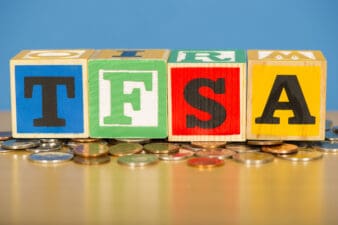Canadian tax brackets are set to increase by 2.7% in 2025. That means that, if you do not expect your pay to increase next year, you will probably pay slightly less tax than you did this year.
Due to the 2.7% increase in the CPI (“inflation”) in the 12 months ended October 2024, the Federal Government decided to increase tax brackets by the same amount. A “tax bracket” is a range of incomes in which a certain tax rate applies. They go up each year by the same amount as the price level, in order to prevent ‘bracket creep’ — the phenomenon whereby you enter a higher tax bracket without earning a higher real wage.
In this article, I will explore the new Federal tax brackets set to roll out in January of 2025.
The new brackets and the incomes needed to get in them
The new Federal tax brackets to be rolled out next year, and the rates applicable in them, are as follows:
| Bracket | Tax rate |
| $57,357 or less | 15% |
| $57,375.01 to $114,750 | 20.5% |
| $114,750.01 to 177,882 | 26% |
| $177,882.01 to 253,414 | 29% |
| $253,414.01 | 33% |
As you can see, these new tax brackets are only marginally changed from last year. That’s because the annual tax bracket adjustments go off of the inflation rate, which was relatively modest in the measurement period. Nevertheless, these new brackets should provide a bit of tax relief if you don’t expect a raise next year. So, they represent a minor win for the Canadian taxpayer.
How to avoid entering a higher tax bracket
A good way to avoid entering a higher tax bracket is to hold your investments in a tax-free savings account (TFSA). Doing so exempts your investment income from taxation and lowers your taxable income without lowering your “true” income.
Consider the iShares S&P/TSX Capped Composite Index Fund (TSX:XIC). It is an index fund based on the S&P/TSX Capped Composite Index, the 240 largest Canadian stocks by market cap. XIC actually holds 220 of the 240 TSX index stocks, meaning that its portfolio is a fairly representative sample of the index it tracks. Index funds that track their underlying indexes well, tend to perform well long term. So, XIC has at least one characteristic of successful index funds.
That’s not the only ‘success’ characteristic that XIC has, however! It also has a low fee (0.05%), which means investors in it don’t pay out too much to the fund’s managers. It has high trading volume and high liquidity, which limits how much you “pay” to market makers. Finally, it is backed by the reputable asset management company BlackRock, which means that when you buy XIC, your money is in good hands. All-in-all, it’s a fund worth considering. And holding it in a TFSA can help lower your taxable income, while increasing your actual income.
None of this means that you should run out and invest your entire portfolio in XIC. Although it has high numerical diversification, it lacks exposure to foreign equities and bonds. You’ll want some of those asset classes in your portfolio. Nevertheless, XIC is a great core holding for many Canadians.









